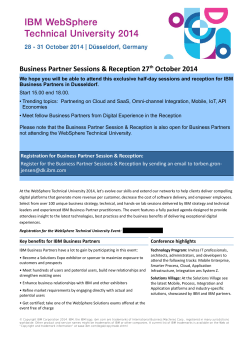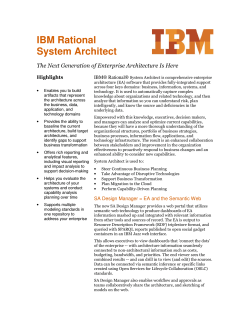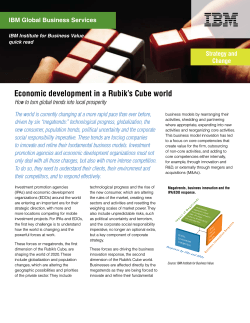
How to Create Dividends Out of Thin Air Through the Use of
InvestingDaily.com How to Create Dividends Out of Thin Air Through the Use of Stock Options By Jim Fink, CFA D ividend-paying stocks are wonderful investments. If you don’t have any in your portfolio, I strongly recommend that you get some. They provide investors with regular income and cushion you against inevitable – but always scary—market declines. But what if you already have a stock portfolio composed of stocks that don’t pay dividends or, if they do, don’t yield as much as you wished they did? Selling everything and starting over with high-yielders is one possibility, but super-high dividends are usually the sign of super-high risky stocks and the last thing anyone needs is to wake up to news down the road that one or more of your stocks has cut its dividend. Furthermore, you bought your current portfolio of high-quality stocks for a reason and you may not want to sell any of them before their investment thesis plays out. So, is there any way to enjoy the wealth-compounding benefits of extra dividends with your current blue-chip stock (but dividend-deprived) portfolio? Stock Options Generate Income Yes, there is a way, but it requires a bit of imagination. It involves the use of stock options, which can be used to generate additional income and reduce the risk of your stock portfolio by creating cash dividends out of thin air. You may be thinking, “Options? I thought options were risky!” In fact, options are risk-transfer tools, some of which increase risk (in exchange for greater profit potential) and some of which generate income and reduce risk (in exchange for lower profit potential). Although most people think of them as a way to speculate on big price moves, they can be used conservatively—to profit from a lack of price movement. The key to generating income with options is to sell them, which lets you reap the rewards from the speculative frenzy of option buyers. Today, I’ll introduce an option strategy that immediately puts cold, hard cash directly into your brokerage account risk free. But first, a quick primer on what options are and how they work is in order. Calls and Puts Options are derivatives—they derive their value from an underlying stock and represent the right (but not the obligation) to buy or sell 100 shares of the underlying stock by a predetermined date (expiration, which is the Saturday after the third Friday of the month). As such, options are not physical things like a barrel of oil or 20 tons of pork bellies, but rather are contracts between two parties that confer rights and obligations. This fact allows you to sell an option without owning it first. There are two types of options, calls and puts. That’s it. And there are two sides to every option transaction—the party buying the option, and the party selling (also called writing) the option. The buyer of the option is said to have a long position, while the seller of the option (the writer) is said to have a short position. Buyer (Long) Seller (Short)* Call Option Right to buy stock Obligation to sell stock Put Option Right to sell stock Obligation to buy stock A call option gives the buyer the right, but not the obligation, to purchase a stock at a certain price called the “strike” price. The buyer pays money to obtain this right. Conversely, the seller of a call option has the obligation to sell his stock at the strike price if the buyer exercises his right. In return for assuming this obligation, the seller receives money up front. The sold call option is considered “covered” because you only sell calls against stock that you already own. Covered Call Writing Creates Dividends Out of Thin Air Pros and Cons of Covered Call Writing The additional income provided by covered-call writing is very attractive, but there is a trade-off involved (i.e., no “free lunch”). What is the IBM call seller forfeiting?—the ability to participate in the stock’s gain above the option’s $90 strike price. Consequently, if IBM goes up in price, writing the February $90 call limits your profit to $5.66 per share (the potential $2.41 gain in the stock up to the $90 strike price plus the certain $3.25 you receive for selling the call). In other words, selling the covered call limits your upside over the next month to 6.5% ($5.66/$87.59). For conservative investors, the guaranteed income from coveredcall writing is arguably more important than gambling that IBM will gain more than 6.5% in a month’s time: IBM Covered Call: Profit/Loss at February Options Expiration (2-22-03) Per-Share Return Covered Calls vs. Straight Stock Purchase IBM Stock Price at February Option Expiration Cash Return with Covered Call* Cash Return with Straight Stock Purchase at $87.59 Advantage Selling call options against your pre-existing stock posi$80.00 -$4.34 -$7.59 Covered Call tions (a.k.a. “covered” calls) $84.34 $0.00 -$3.25 Covered Call generates income that is similar to receiving a cash dividend. $87.59 $3.25 $0.00 Covered Call For example, let’s go back $90.00 $5.66 $2.41 Covered Call in time to Jan. 15, 2003 and assume that you’re a longtime $93.25 $5.66 $5.66 Equal holder of 100 shares of IBM $95.00 $5.66 $7.41 Stock Alone (NYSE: IBM). The company’s annual dividend was $0.60 per $100.00 $5.66 $12.41 Stock Alone share, which equaled an annual *Assumes IBM stock purchased at $87.59 and Feb. $90 call sold at $3.25. yield of only 0.7%. Since its October 2002 low of $54, IBM has rallied strongly to its current price of $87.59. With the stock up more than 60% in Covered Call Writing Wins three months, you don’t expect much more upside in the Most of the Time short term, yet you think the stock won’t go down much, either, since it’s a bastion of blue-chip safety. You want to As the above table demonstrates, covered-call writing supplement its 0.7% yield as the stock stagnates. reduces your downside risk from owning IBM stock at all Since you think IBM has topped out for now, why not price points below your purchase price of $87.59. It also sell the rights to further upside — upside you don’t think increases your profit at all price points between $87.59 and will actually occur — to some greedy speculator who thinks $93.25. The only scenario where the covered call is not differently? The closest strike price to the stock’s current price superior is if the stock appreciates 6.5% or more ($93.25 of $87.59 is the $90 strike. You decide to sell a February 2003 or higher). If you’re like me, sacrificing a bit of potential – call with a $90 strike price for $3.25 per share—remember, but far from guaranteed – upside is a small price to pay for you don’t need to already own the call option to sell it. The reduced risk and peace of mind. $3.25 received is like a “dividend” and equates to a yield of 3.7% ($3.25/$87.59) for just one month’s time! Investing Daily, a division of Capitol Information Group, Inc., 7600A Leesburg Pike, West Bldg., Suite 300, Falls Church, VA 22043. Subscription and customer services: P.O. Box 4123, McLean, VA 22102-9819, 800-832-2330. It is a violation of the United States copyright laws for any person or entity to reproduce, copy or use this document, in part or in whole, without the express permission of the publisher. All rights are expressly reserved. ©2011 Investing Daily, a division of Capitol Information Group, Inc. Printed in the United States of America. ID_StockOptionsThinAir_0311-SK. The information contained in this report has been carefully compiled from sources believed to be reliable, but itsto accuracy is notDividends guaranteed. Disclaimer: most up-to-date advice andthe pricing, go toof www.InvestingDaily.com. 2 How Create Out For of the Thin Air Through Use Stock Options Profit off of Someone Else’s LowProbability Gamble What are the odds that a large, blue-chip stock will appreciate by more than 6.5% in the next month after having already gone up 60% in the previous three months? Unless you have insider information, I think it’s almost always a bad bet to make. In fact, in IBM’s case, the implied volatility of the February $90 call option indicated less than a 38% chance that the stock would close above $90 at February expiration. Consequently, based on statistics 62% of the time (100%-38%) writing the February $90 call should turn out to be the right decision. The beauty of options is that they let you profit from someone else’s risky (and often wrong) bets. If somebody is greedy enough to want to pay me money for the right to profit from something that has only a 38% chance of playing out, I’ll take his money every time. Even if the “Greedy Gus” strikes pay dirt, I’ll be happy with my 6.5% return in one month! And you can always buy back into IBM stock after getting exercised if you think IBM offers further upside in the months and years ahead. 40 Times The Yield! Don’t forget that the 3.7% yield you received for selling the February 2003 call option was only for one month. Assuming the stock stayed around its then-current price of $87.59 at February expiration, you could have written another onemonth $90 call at that time (i.e., March expiration) and pocketed another 3.7% dividend. Altogether, you could theoretically have written this call twelve times per year and received a total dividend yield of 44.4%. Pretty amazing yieldenhancement potential for a stock that paid a dividend of less than one percent! What Actually Happened to IBM Using the Covered-Call Strategy At the February 2003 expiration, IBM fell to $79.95, so selling the call was definitely better than just owning the stock and doing nothing. The covered call reduced your stock’s paper loss by $3.25, but you would have still had a net loss of $4.39 ($87.59-$79.95) + $3.25. With the stock now below $80 and the February $90 call expiring worthless, you could have sold another covered call to bring in more income, this time at a lower strike price: the March $85 call for $1.00. At the March 2003 expiration, January 2003 February IBM Stock Price $87.59 $79.95 Profit From Stock Only $0.00 ($7.64) Profit From Covered Calls $0.00 ($7.64) + $3.25 = ($4.39) www.InvestingDaily.com IBM closed at $84.90, so the $85 call expired worthless, too. You could then have sold the April $85 call for $3.20. At the April expiration, IBM closed at $84.26, and the call once again expired worthless. You’ve now generated $7.45 per share in income by selling covered calls for three months, money that you wouldn’t have had by merely holding onto the stock. A stock-only approach would have resulted in a loss of $3.33 per share ($87.59-$84.26), while the covered call approach absorbed the stock losses and still generated a net profit of $4.12, or 4.7% ($4.12/$87.59). Based on the above table, do you see how covered calls can turn a losing stock into a winner? Amazing! A Covered-Call Strategy Beats the S&P 500 The IBM example may be an ideal example of the benefits of covered-call writing, but its success is also representative of covered-call writing in general; it is not a fluke. In fact, academic studies have concluded that call options are often overvalued. Consequently, selling covered calls on your stock portfolio has historically outperformed a stock-only strategy. For example, a 2006 Callan Associates study concluded the following about the S&P 500 Buy-Write Index (Chicago Options: ^BXM): The results show that the BXM Index has generated superior risk-adjusted returns over the last 18 years (18 years and 3 months, to be exact), generating a return comparable to that of the S&P 500 at approximately twothirds of the risk. The compound annual return of the BXM Index since June 1, 1988 is 11.77 percent, compared to 11.67 percent for the S&P 500. The BXM returns were generated with a standard deviation of 9.29%, two-thirds of the 13.89% volatility of the S&P 500. Possible Tax Implications of Covered Calls The risk of selling a covered call – besides losing out on stock appreciation above the strike price – is that the call option may be exercised “early” (i.e., prior to expiration) and you will be required to sell the stock at the strike price, which may cause you to incur a significant tax March April liability if the stock is in a taxable account $84.90 $84.26 and your cost basis in the stock is low. Early exercise ($2.69) ($3.33) is more likely for dividend-paying ($3.33) + $3.25 ($2.69) + $3.25 stocks. Sometimes + $1.00 + +$1.00 = $1.56 the call option buyer $3.20 = $4.12 3 will exercise the call the day before a stock’s ex-dividend date in order to capture the dividend. However, this is only a significant risk if the option expires soon and is “in the money.” If the stock price is below the strike price, the buyer would have to pay an above-market price for the stock, and it’s unlikely that collecting the dividend would make up the difference. Of course, you may have the opportunity to buy back the covered call before it gets exercised, and thus avoid the taxable event, but there is no guarantee. At expiration, any call option that is “in the money” (the stock price is above the call option’s strike price) by at least $0.01 will be automatically exercised by the Options Clearing Corporation. 4 Consequently, covered calls on stocks that you have owned for a long time (and which have significantly appreciated) work best in a tax-deferred IRA or 401k account. Selling Covered Calls May be Worth a Try! If you are very bullish on a stock, simply buy the stock. If, however, you want to enhance your dividend income and reduce the risk of owning stock, selling covered calls against your stock holdings will be the better choice a majority of the time. The above examples of IBM and the academic studies are powerful evidence that a covered-call strategy can provide significant risk-reducing benefits to your stock portfolio. How to Create Dividends Out of Thin Air Through the Use of Stock Options
© Copyright 2025





















